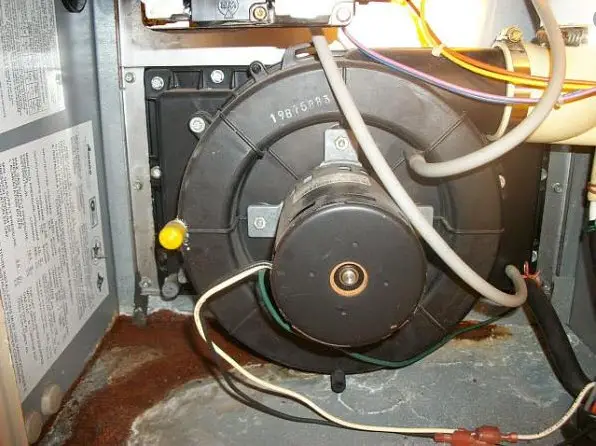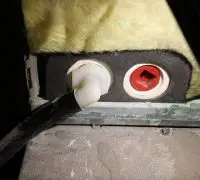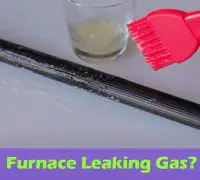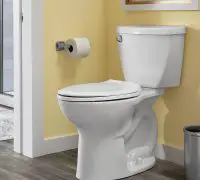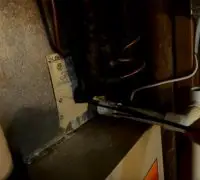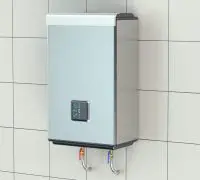Ideally, you never want to experience any problems with your furnace, especially not in the cold season. Modern furnaces are sophisticated and reliable, but the risk for issues is never null. Some of the problems have easy fixes, so you don’t have to call the technician. Other times, the problems signal damage to some of the system’s components, in which case professional help is recommended.
One of the problems you may have to deal with at some point is a furnace leaking water. Don’t hurry to call the professional just yet; first, get informed and see if that’s not a problem that you can address on your own. It may come as a surprise to you, but knowing a thing or two about your furnace is the first step when dealing with a problem.
Page Table of Contents
Which type of furnace do you have?
Even if there are several causes for which your furnace could be leaking, condensation leak is the most common. You should check once again, which type of furnace you have: is it a high-efficiency model or non-condensing (conventional furnace)? The type of furnace you have is fundamental for addressing water leaking; a Bryant plus 90 furnace leaking water (high-efficiency, so condensing) will require a different approach from a Bryant 80 (which is non-condensing).
Checking the exhaust pipe is the most effortless way to figure out which kind of furnace you have. High-efficiency furnaces come with white plastic pipes, whereas conventional models have metal pipes.
Examining the AFUE (annual fuel utilization efficiency) rating is another method to determine the type of furnace you own. When the furnace has a 90% or higher AFUE rate, you have a condensing/high-efficiency furnace. This type of furnace presents a cool exhaust and generates condensation. Furnaces with AFUE rate below 90% come with metal exhaust pipes and are standard-efficiency units.
Typically, furnaces present the AFUE rating printed on a yellow energy guide sticker right on the unit. Checking the exhaust pipe is a reliable method, most of the time.
Why does a high-efficiency condensing furnace leak water?
It’s relatively common for high-efficiency furnaces to generate condensation throughout the operation process. Water leakage doesn’t pose a high risk for damage, and the repair is minor.
Here’s what causes water leakage for a high-efficiency furnace:
- Problems with the condensation liner
- Issues with the condensate pump
- Blocked condensate drains
Is it typical for high-efficiency furnaces to generate water?
High-efficiency furnaces feature two heat exchangers, so it’s typical for them to produce water. The two heat exchangers will collect so much heat that the exhaust gas will switch from a gas state to a liquid form. Condensation will appear, draining through the condensate line later on.
A furnace that is correctly serviced will correctly drain the condensation water. Any leaks or clogs will stop the condensation from being eliminated from your house, pooling close to your furnace.
Can you fix the leakage?
The first thing to do when the high-efficiency furnace is leaking is to see if the drain trap is clogged in any way. The drain trap should collect water and dirt, but it can get clogged. If that’s the case for you, you may use a shop vac to clear it.
Should the humidifier, condensate pump, or drain line be damaged, only a professional will solve the problem.
What can cause water leakage? The detailed approach
several factors can cause water leakage close to your furnace. It’s not a problem going away on its own, and you should address it as soon as possible. Here’s what may cause water leakage around your furnace:
Humidifier leak
A clog or damage to the humidifier can also cause water leakage. The humidifier is connected to the plumbing system to provide moisture to the air. When any breakage develops, or the humidifiers become clogged, water will start dripping around your furnace.
Humidifiers need water to generate humidity, so water will always flow into the furnace and drain out of it, adding the necessary moisture to the air inside your house. You should see if the furnace comes with a built-in humidifier (it’s easy to spot on the outside of your furnace). Clog or leaks could be visible at the water tap line, water feed tube, drain line, and outside the humidifier casing.
Should you notice clogging or leaking in the humidifier, you need to call the professionals. If you’re not suspecting that the humidifier is leaking, you should examine other components.
The plumbing is leaking.
It’s not always something wrong with the furnace if you notice water leaking; the plumbing could be the problem as well. It’s a good thing that the components of your furnace don’t cause water leakage. It doesn’t mean that you should postpone fixing the leakage, though.
If a damaged or clogged plumbing pipe generates a backup in the drainage system, the furnace may appear as leaking. It’s the pipes that need repairs or replacement.
The filter is clogged.
A filter that is clogged or dirty; will block airflow throughout the furnace coil. The coil will freeze most of the time. At times, the water will leak, pooling up around your unit. You need to examine the furnace’s air filter and install a new one if it’s dirty.
The vent pipe has a poor design.
Conventional (non-condensing) furnaces come with metal flue pipe. The flue pipe has to transport the gases generated throughout the combustion process away from your house. When everything runs appropriately in the furnace, it will eliminate the gases outside before they cool down, turning into moisture.
If the exhaust pipe has no slope or it’s too big for your application, it will let too much air circulate, trapping the gases in the flue. As the gases stay in the cool, they will eventually turn into condensation that causes water leakage. You will need to call the professionals for repairs and the proper design of the pipe.
Air conditioner
It’s common for homeowners in temperate areas like California to use furnaces and air conditioners throughout the same season. When one uses both the furnace and the air conditioner simultaneously, the condensation pan will fill up, and water will drip onto the system. Make sure that it’s the air conditioner and not the furnace when you find water leakage.
Heat exchanger
The heat exchanger can also cause water leakage, and it’s probably the priciest repair to make. Should you have checked all the other causes and didn’t find a solution, the heat exchanger could be the cause.
If that’s the case for you, you will need to call the technician and replace the unit.
One last piece of advice
Should you observe water dripping from the furnace or pooling up at the base, you shouldn’t wait to fix the problem. There are a couple of things that you should do until the HVAC technician arrives.
You should turn off the furnace; find the switch on or close to the furnace (it looks like regular light switches). If you don’t see the button, turn the furnace off right at the breaker.
Also, start cleaning up all the water pooling around the base. Make sure to soak up all water as water doesn’t need much time to do actual damages. You should rent a wet-dry vacuum if you deal with a significant amount of water.
Water leakage may not be serious, but it’s never a problem going away on its own. Always call the professionals when you don’t seem to find the cause of water leakage.
